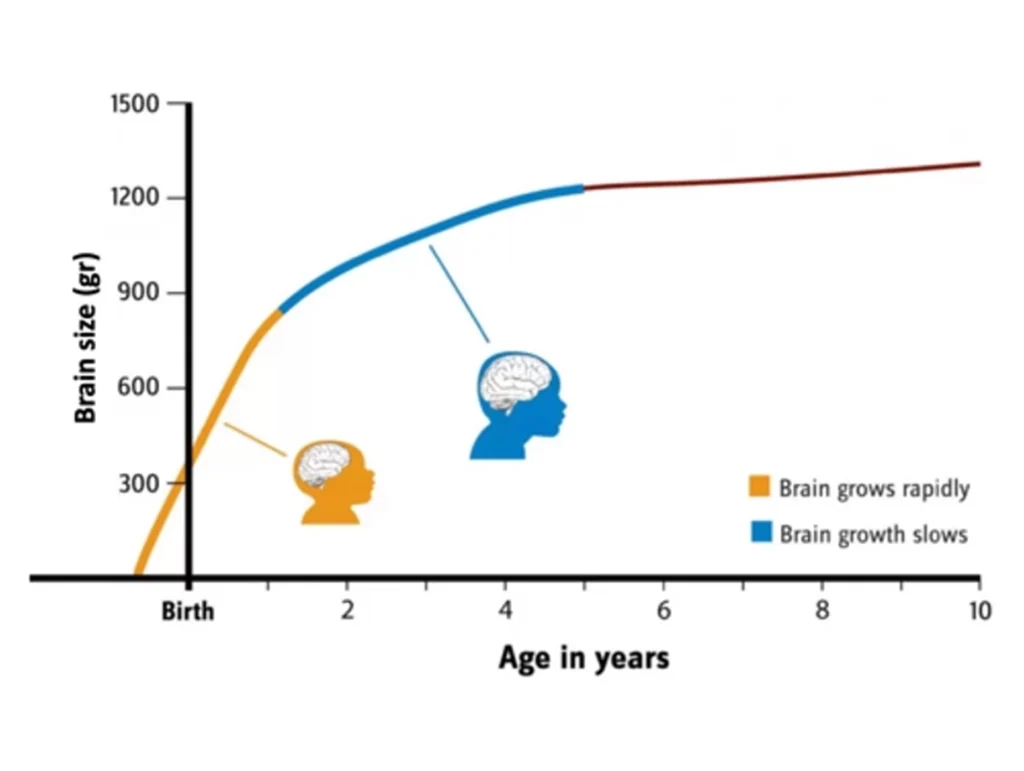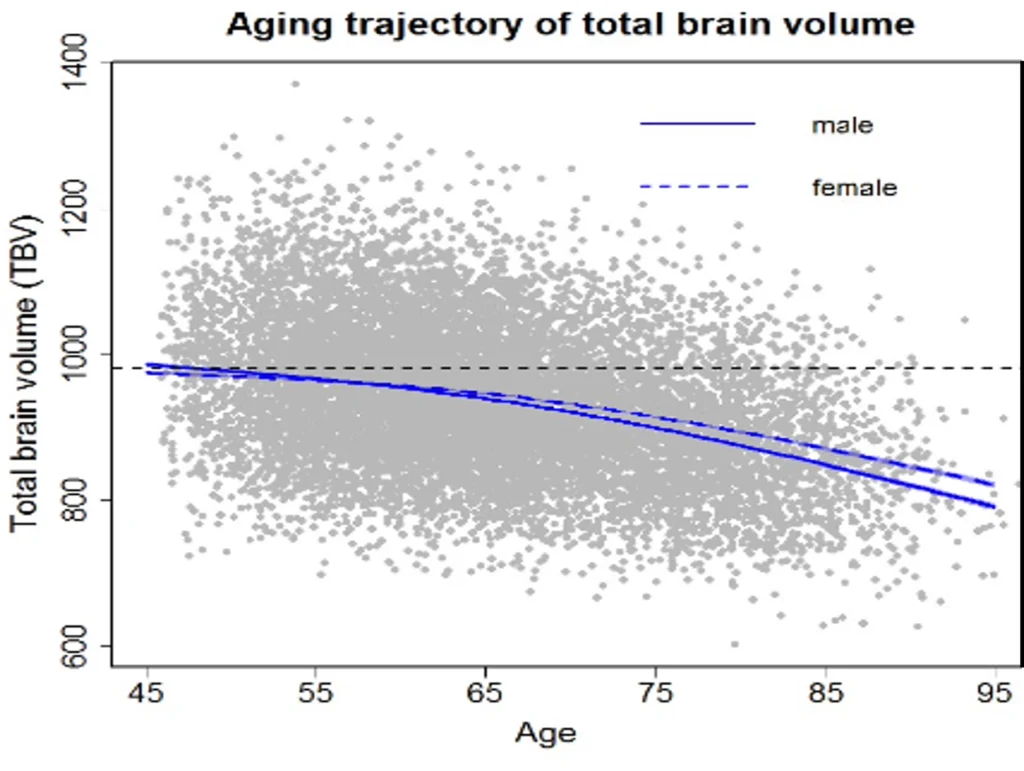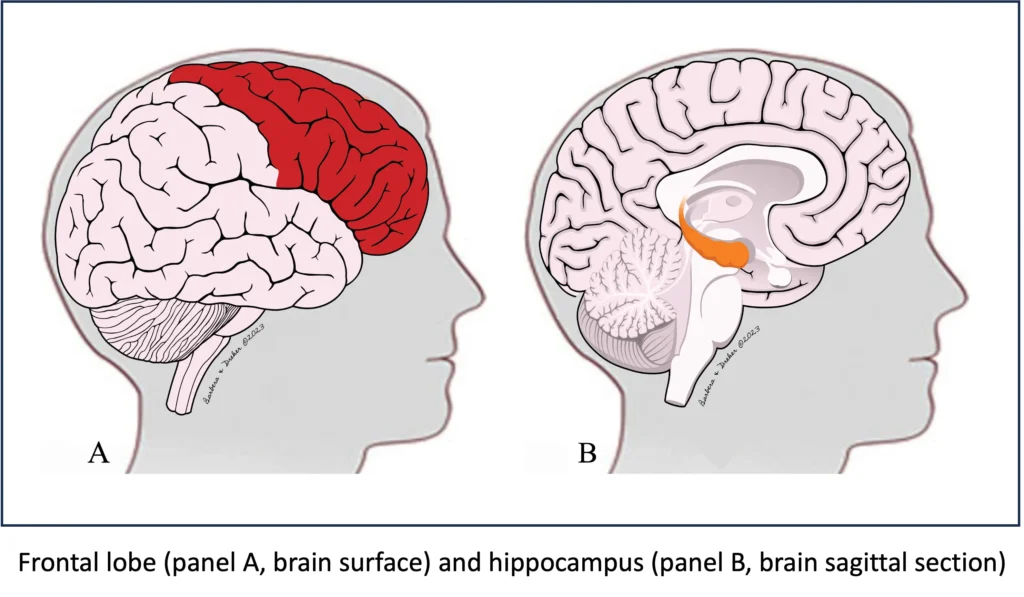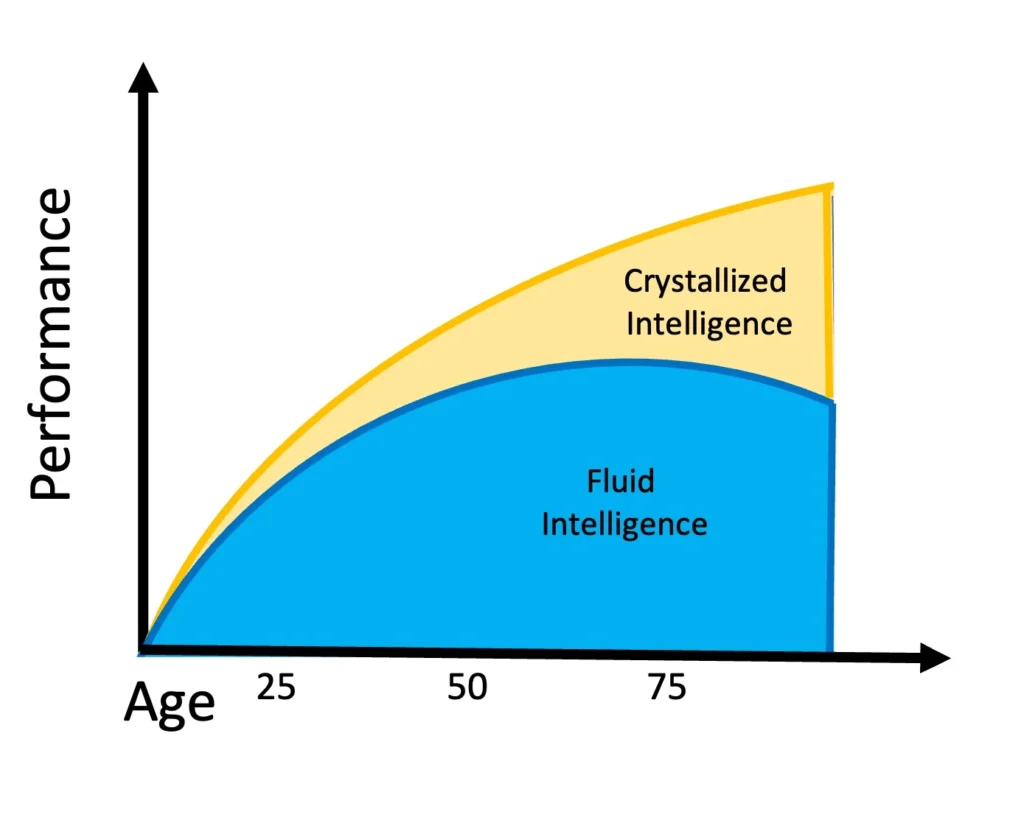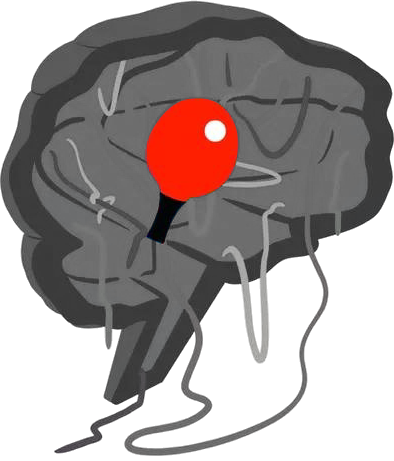THE NEUROPONGTM PROGRAM – BRAIN AGING
Brain Aging: Navigating the Challenges to Cognitive Health
The brain’s structure, function, and well-being are vital for human activity. From simple movements to complex cognitive processes, every facet of life depends on this remarkable organ. However, this sophisticated network is not immune to harm. Both the central nervous system (CNS) and peripheral nervous system (PNS) can experience significant breakdown. Damage from infections, trauma, cancers, immune disorders, or aging can lead to brain cell death, impairing its complex functions.
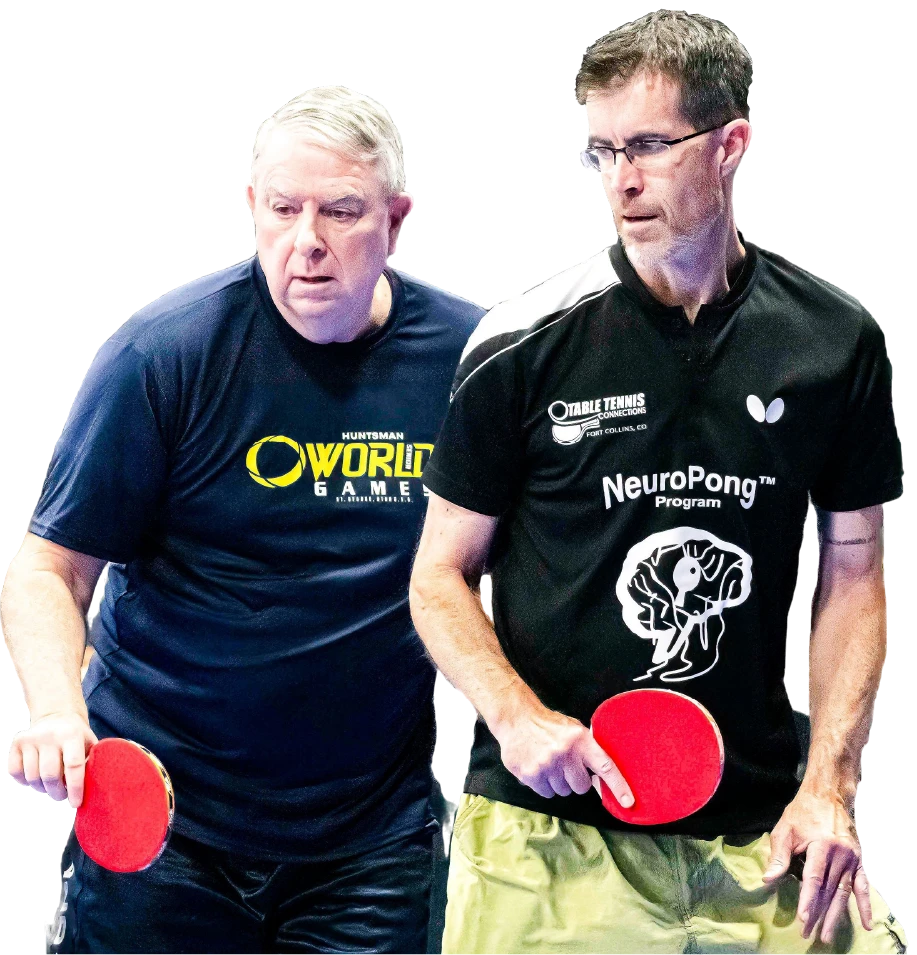
The Hidden Challenges
Structure, Cells and Communication
At its core, the brain is made up of neurons, estimated at 100 billion at birth, which communicate through one-way electrical signals (nerve impulses). Dendrites receive signals, while axons transmit them. Some neurons have up to 100,000 dendrites, enabling connections at an astonishing rate of up to 1 million per second, though this process slows with age. At the interaction between an axon and a dendrite, a molecule (neurotransmitter) is released in the existing gap between the two structures and then attaches itself to the receptors of the receiving dendrite. Surrounding neurons are glial cells, astrocytes, and oligodendrocytes, which provide support, regulate blood flow, exchange nutrients, and produce myelin.
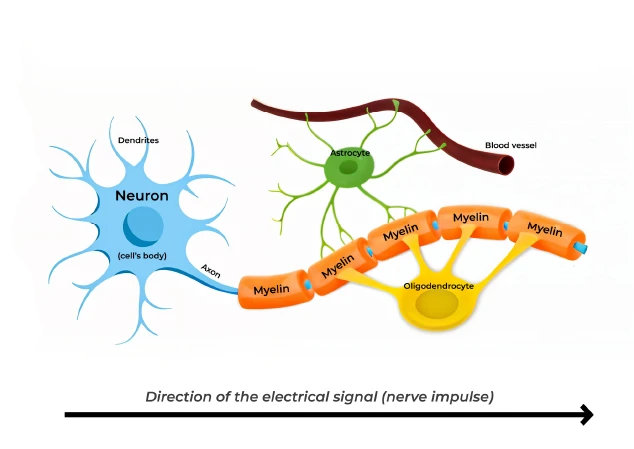
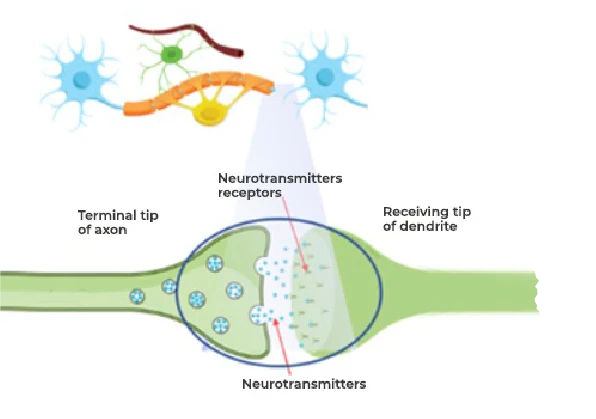
Glial cells, equal in number to neurons, enhance the quality, speed, and reliability of signals. Myelin, a white fatty layer around axons, ensures these signals remain fast and consistent. The cerebral cortex, or gray matter, forms the brain’s wrinkled outer layer. It consists of neuron cell bodies, dendrites, glial cells, and small blood vessels but lacks myelin, giving it its characteristic gray appearance. In contrast, the deeper white matter hosts axons coated with myelin, enabling rapid and efficient communication throughout the brain’s complex network.
Brain Aging
How Time Affects Cognitive and Behavioral Functions
By age 6, the brain’s size reaches almost 90% of its adult volume. However, from ages 30-40 onward, aging impacts the brain, leading to neuronal and glial cell death and gradual shrinkage, especially in the frontal lobe and hippocampus. Damage to these areas can impair cognitive function and behavior. Frontal lobe decline affects executive functions, emotional regulation, planning, reasoning, and problem-solving. The hippocampus is involved in learning, memory, spatial navigation, emotional behavior, regulating other brain areas, and producing new brain cells even in adulthood.
The challenges created by the normal aging of the brain are often addressed by simply taking more time to complete tasks related to the impacted functions. What is fascinating is that, even though age inevitably brings its challenges, neuroscience has shown that certain cognitive functions can improve under the certain conditions.
Fluid intelligence — the ability to process new information, learn, and solve problems — begins to decrease after adolescence. But it can be improved by challenging oneself, mixing up a routine, thinking creatively, and socializing regularly, all things that NeuroPongTM provides.
Crystallized intelligence — the ability to accumulate knowledge, facts, and skills throughout life — can be improved by learning a new language, acquiring a new skill such as learning table tennis, taking new classes, or reading books.

NEUROPLASTICITY
The Brain’s Remarkable Ability to Adapt and Rewire
Despite aging challenges, the brain retains the ability to adapt and rewire itself through neuroplasticity. This means that, under the right conditions, neurons can regenerate connections and improve function or create workarounds for deficits. For example, learning to play the piano leads to new connections that become hardwired over time, improving activity. Neuroplasticity also occurs in traumatic brain injury or stroke rehabilitation, creating new and alternative neural connections.
This rewiring is more robust during childhood brain development but can still occur, although in a less rapid fashion, in older brains. Based on new knowledge regarding neuroplasticity, research into rehabilitative programs aims to slow or reverse the rapid neuronal death in neurodegenerative conditions. Current research data shows that aerobic and anaerobic exercises like running, walking, boxing, cycling, horseback riding, and table tennis can significantly slow progressive damage.
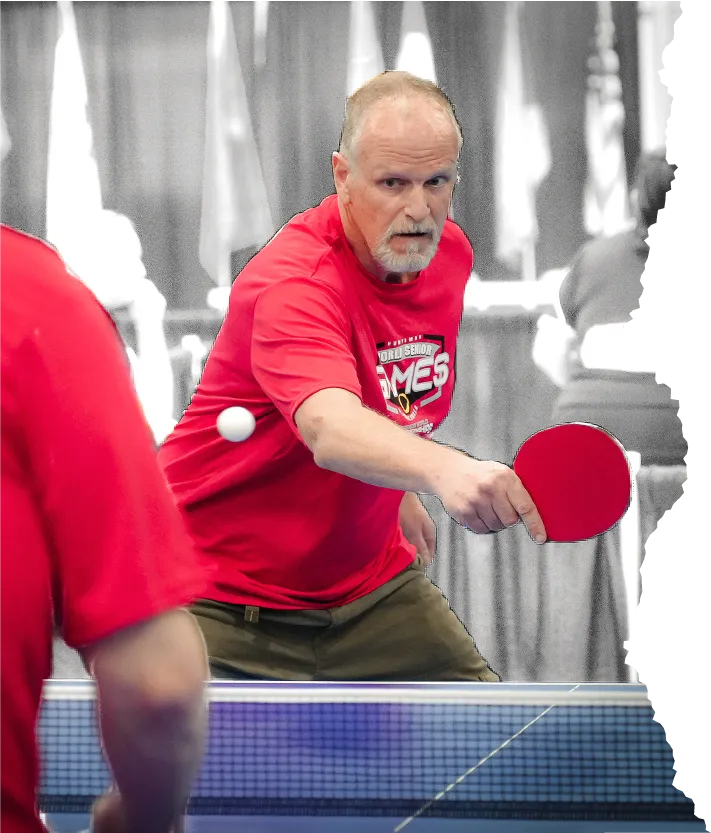
Mild Cognitive Impairment (MCI)
Identifying and Managing Early Signs of Cognitive Decline
Mild Cognitive Impairment (MCI) involves difficulties in memory, language, and concentration, but individuals can usually perform daily tasks independently. It affects 12% to 18% of those aged 60+, and 10% to 15% of MCI cases progress to dementia annually. Some may return to normal cognition or experience no further decline.
MCI is diagnosed through medical history, clinical exams, and cognitive assessments. It’s important to distinguish it from normal age-related changes. People with MCI often have poorer health and increased emotional issues. No medications currently help, but regular exercise is recommended as a non-drug intervention. NeuroPongTM offers physical activities to improve cognitive function in those with MCI
Neurodegenerative Conditions
Accelerated Cell Damage and Managing Symptoms
Neurodegenerative conditions, including Multiple Sclerosis (MS), Parkinson’s (PD), dementia, and Amyotrophic Lateral Sclerosis (ALS), involve accelerated cell damage and death in the nervous system, leading to functional loss. There is no cure for these conditions, and treatment mainly focuses on managing symptoms. Ongoing research into understanding these conditions and finding new treatments is essential.
Physical exercise benefits brain health by improving blood flow, neurotransmitter levels, and cognitive function. NeuroPongTM Program supports individuals with structured training and stimulating activities that challenge memory, movement, attention, and executive function, helping maintain cognitive abilities and delay progression while offering social engagement and a fun, engaging environment.

